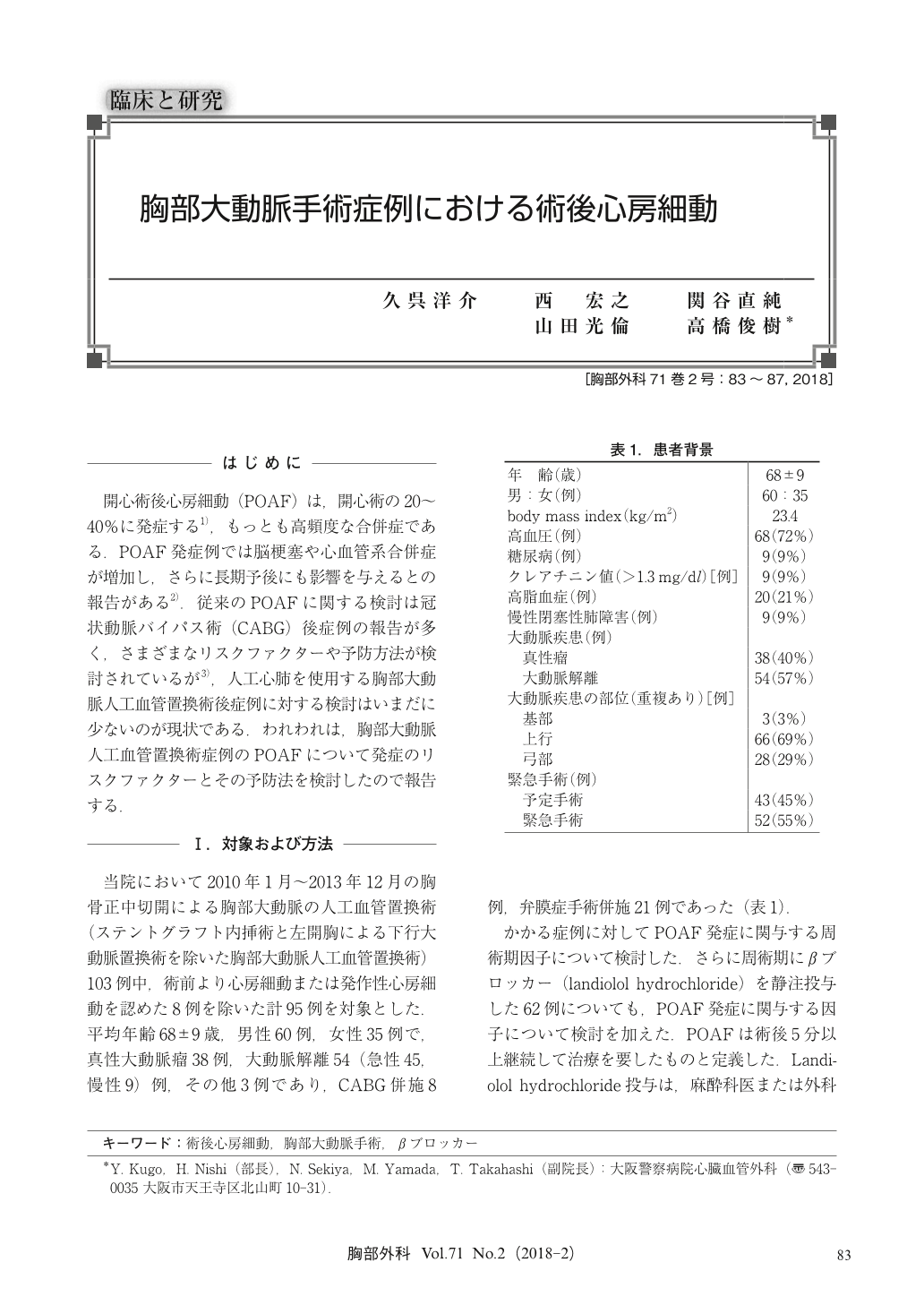Japanese
English
- 有料閲覧
- Abstract 文献概要
- 1ページ目 Look Inside
- 参考文献 Reference
開心術後心房細動(POAF)は,開心術の20~40%に発症する1),もっとも高頻度な合併症である.POAF発症例では脳梗塞や心血管系合併症が増加し,さらに長期予後にも影響を与えるとの報告がある2).従来のPOAFに関する検討は冠状動脈バイパス術(CABG)後症例の報告が多く,さまざまなリスクファクターや予防方法が検討されているが3),人工心肺を使用する胸部大動脈人工血管置換術後症例に対する検討はい
Purpose:Postoperative atrial fibrillation (POAF) is a very common and important complication occurring after open heart surgery. Risk factors and prevention measure including β blocker use have been reported mainly in regard to patients who underwent coronary artery bypass grafting, while little is known about POAF following thoracic aortic surgery. In the present study, we examined risk factors related to POAF and effective prevention of POAF in patients who underwent thoracic aortic surgery.
Patients and Methods:We evaluated 95 consecutive patients who underwent thoracic aortic surgery since 2010. We analyzed the relationship between perioperative factors and occurrence of POAF in the study cohort, as well as in 62 patients who had perioperative intravenous β blocker (landiolol) administration.
Results:Following surgery, 21 (22%) of the patients had new onset POAF. The occurrence of POAF was related to that of stroke. Univariate analysis showed that age was a risk factor for POAF. In patients with landiolol, risk factors for POAF were age, arch aneurysm, and timing of landiolol administration. Six patients developed POAF during landiolol administration. However, of 56 patients who had not have POAF during landiolol administration, 8 developed POAF after stopping landiolol.
Conclusion:Our findings show that the risk factor of POAF after thoracic aortic surgery is age, while perioperative administration of landiolol may reduce POAF incidence.

© Nankodo Co., Ltd., 2018


